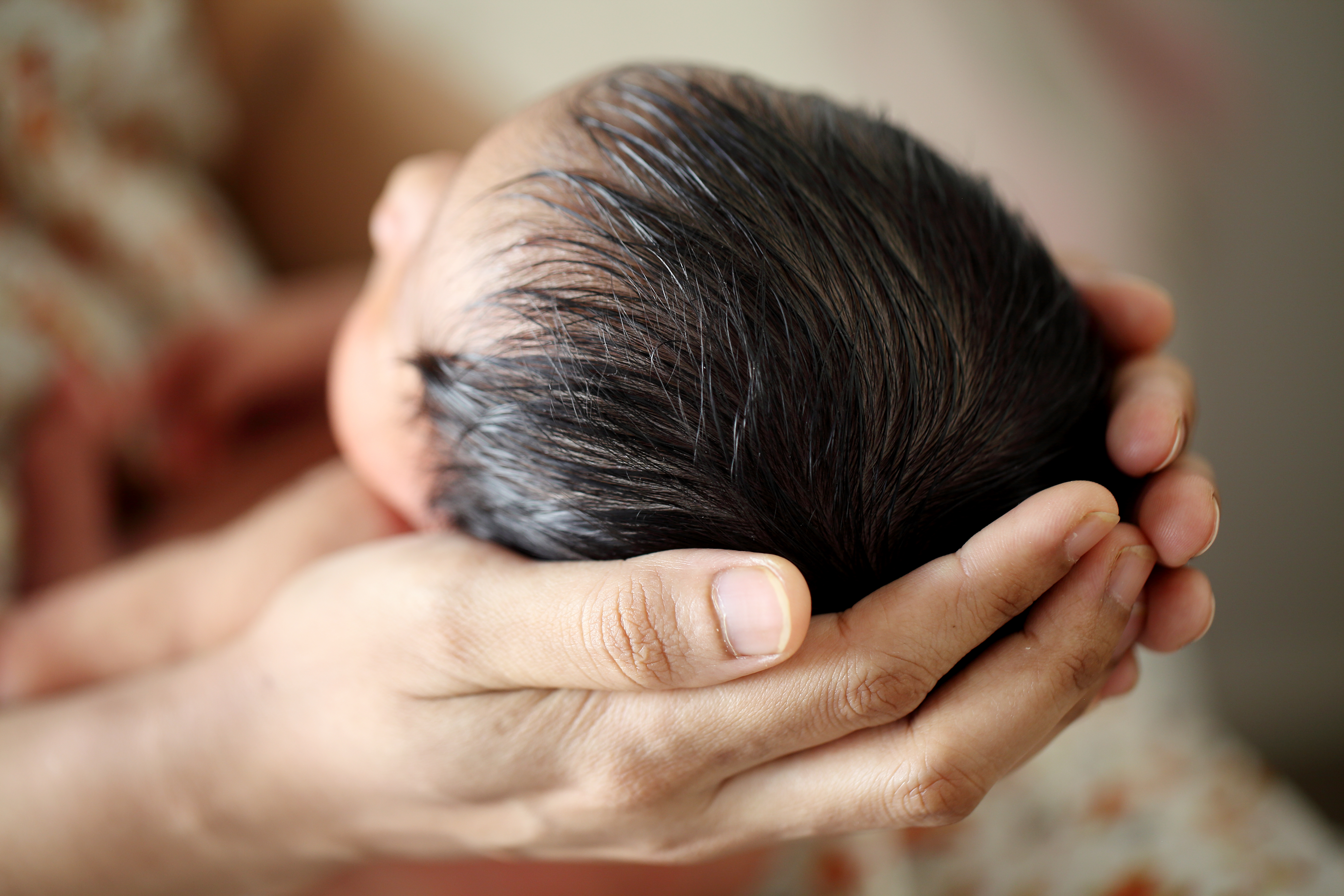
Health & Medicine
Busting five myths about pregnancy

New research shows that occasional exposure to alcohol may influence facial shape and brain development
Published 12 February 2025
Fetal Alcohol Spectrum Disorder (FASD) describes a range of severe neurodevelopmental impairments caused by alcohol exposure before birth.
People with FASD can experience a wide variety of challenges including difficulties with physical coordination, language, memory, learning, executive function, behaviour and birth defects.

The severity and type of these impairments can vary significantly from person to person – making FASD a spectrum condition.
While it’s well-known that alcohol crosses the placenta and can interfere with development and growth of a baby’s brain and other organs, the nuances of how occasional or minimal drinking impacts fetal development have remained unclear.
Although the risk of harm to the baby generally increases with the amount and frequency of alcohol use, a range of maternal and fetal factors can influence this risk.
This makes it difficult to predict the exact effects of drinking alcohol during pregnancy for any individual.

Health & Medicine
Busting five myths about pregnancy
Since 2009, the Australian National Guidelines to Reduce Health Risks from Drinking Alcohol, currently promoted by the nation-wide campaign Every Moment Matters, have recommended that it’s safest to abstain from drinking alcohol completely throughout pregnancy.
The latest data from the National Drug Strategy Household Survey in Australia reveals that, despite this longstanding advice, nearly one in three pregnant women (28 per cent) still drink alcohol.
While this statistic is troubling, it’s important to highlight that most women who drink alcohol during pregnancy do so at low levels, often significantly reducing or completely stopping once they’re aware of their pregnancy.

Not surprisingly, navigating the conversation around alcohol use during pregnancy is complex and can be controversial.
Research, including our team's studies (here and here), shows that many women who continue to drink alcohol during pregnancy are highly educated and well aware of the public health messages advising abstinence.
The lack of strong evidence linking lower levels of alcohol use to negative outcomes has sparked debate about whether abstinence is necessary.
However, it’s important to recognise that claims like this can be risky and may contribute to misinformation.

Health & Medicine
A simple way to improve maternal health globally
The potential harm lies in downplaying the uncertainty of this issue – as even low levels of alcohol use could have unforeseen effects on fetal development, which we don't fully understand yet.
In our Asking Questions about Alcohol in Pregnancy (AQUA) study, which began in 2011, we followed a large community-based group of more than 1,000 pregnant women and their children over the course of a decade.
Our aim was to study the potential risks of lower levels of prenatal alcohol exposure.
From the outset, we understood that accurate and honest reporting of alcohol use without fear of judgment was essential, and our questionnaire spent two years in development with considerable community input.
Our latest findings, the most recent now published in JAMA Pediatrics, look at both child development and physical markers (like facial shape as well as brain structure and function) in children at early school age.
Prenatal alcohol exposure can affect both facial and brain development, sometimes leading to distinct facial features and developmental concerns.

Using highly specialised 3D imaging and analysis techniques, we found consistent changes in the shape of the eyes and nose, both at 12 months and six to eight years of age, in children exposed to relatively low doses of alcohol during pregnancy.
These facial changes, which are not discernible without specialised imaging and analysis, are similar regardless of whether they were exposed to alcohol in only the first trimester or continued throughout the pregnancy.
But we didn’t see a clear link between the level of alcohol exposure and the degree of facial change.
Our analysis of MRI scans from 143 children aged six to eight years did not find many differences in brain development between children exposed to alcohol and those who were not.
This was especially the case for those who were only exposed in the first trimester.

However, we did find weaker connections between different brain areas in children who were exposed to alcohol throughout pregnancy.
Specifically, a small area of the brain – the right caudal anterior cingulate – and its connecting pathways differed in children with alcohol exposure at any stage of pregnancy.
This suggests that this part of our brain may be particularly sensitive to even small amounts of alcohol.
The anterior cingulate is part of our limbic system. It's involved in functions like attention, reward-based learning, executive function (decision making and problem solving), impulse control, social interactions, emotional regulation and empathy.
Many of these functions are known to be affected in children with FASD.

We also saw weaker connections in a related brain network that is important for higher-level functions.
This network – known as the right cortico-basal ganglia-thalamo-cortical network – influences functions like problem solving, planning and decision-making and emotional regulation.
Reassuringly, we found no significant differences in cognition (thinking), behaviour, social skills, executive function, or language or motor (movement) development at age two and in early school-age children – with or without alcohol exposure.
Our research shows that even lower levels of prenatal alcohol exposure can be linked to specific facial changes that persist into early childhood.
Exposure throughout pregnancy was also associated with changes in key brain structures and connectivity.
These changes, though not always directly linked to developmental issues, highlight the hidden biological consequences of alcohol use during pregnancy.

Health & Medicine
Australia’s COVID-19 relationship with booze
Understanding these effects is key to providing clearer guidance for parents and healthcare providers. It also reinforces the need for targeted health messaging to support informed decision-making during pregnancy.
The persistence of alcohol use among some pregnant women, despite education campaigns, suggests that blanket advice urging abstinence may not resonate with everyone.
We need a more tailored approach to health messaging that considers factors like social influences, individual attitudes and personal experiences.
However, it’s essential to recognise that this conversation mainly applies to women who can make informed choices about their alcohol use.

For women struggling with alcohol dependency or finding it difficult to quit because of social circumstances – the issue is far more complicated.
Advocating for abstinence alone may not be effective for these women, who may require additional support and professional intervention.
In these cases, the focus should be on providing resources and care, rather than placing the burden solely on individual choice.
A more personalised approach to health communication could provide pregnant women with a deeper understanding of both the risks of alcohol use and any specific concerns they have, ultimately promoting healthier behaviours.

Health & Medicine
Parents of premature babies are being left behind
To get the best possible outcomes for the child, abstinence from alcohol during pregnancy is considered the safest choice, with even small amounts associated with differences in the face and brain.
Where choice is possible, women and their partners can avoid potential harm to their unborn child by following this advice.
This study is a collaborative effort between the Murdoch Children’s Research Institute, Monash University, University of Melbourne, Royal Children’s Hospital, University of Sydney, University of Oxford and KU Leuven, with research conducted by Peter Anderson, Jane Halliday, Evi Muggli, Deanne Thompson, Stephen Hearps, Alicia Spittle, Tony Penington, Elizabeth Elliott, Michael Suttie, Harry Matthews, and Peter Claes.